Salon, spa and clinic therapists can play a pivotal role in helping clients deal with body insecurities – and deter them from pursuing desperate “solutions”. By Jenni Gilbert.
At a salon, spa or clinic level, the way you communicate with clients who have body image issues is all-important – what you DON’T say as much as you DO.
I have written previously how, during my late 20s-early 30s, I suffered undiagnosed glandular fever that morphed into post-viral fatigue (aka chronic fatigue) syndrome.
It manifested in debilitating panic attacks that made me near-agoraphobic, I felt and looked dreadful and much older than my years. I became inordinately self-conscious about my appearance – specifically, how I perceived how old others perceived I looked.
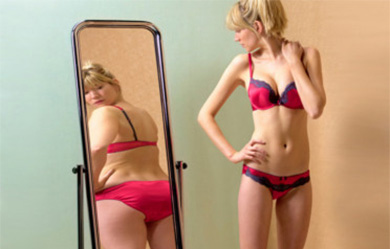 It was during those years I developed a phobia about skincare purveyors at department stores and beauty/dermal therapists who would take it upon themselves (when I had gone to them hoping to feel better about myself) to volunteer how appalling I looked, and SO much older than my chronological age, and what I needed to do and buy so I could be seen in public without a paper bag over my head.
It was during those years I developed a phobia about skincare purveyors at department stores and beauty/dermal therapists who would take it upon themselves (when I had gone to them hoping to feel better about myself) to volunteer how appalling I looked, and SO much older than my chronological age, and what I needed to do and buy so I could be seen in public without a paper bag over my head.
Wow, thanks. That made me feel SO much better! Perhaps they thought it was a tool for upselling products and treatments, but not only did it have the reverse effect for me, I avoided their places of business thereafter and encouraged anyone I knew to do likewise.
But worse than anything, this kind of ‘advice’ made me even more depressed, self-conscious and considering a facelift at age 33 (I was told ‘definitely not’ by a very ethical plastic surgeon).
Below, pictured with her famous footballer boyfriend, is a great-looking girl. Frankie Barwell ticks all the stereotypically ‘right’ boxes: long, healthy-looking blonde hair, great skin, pretty face and healthy figure (not crazy about her dress, but that’s subjective).
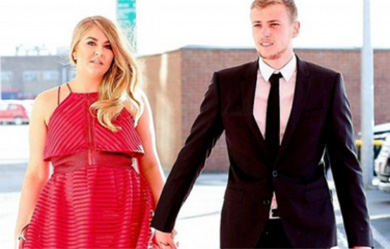
She looks refreshingly fresh, really happy and nice. Her partner, Manchester United’s James Wilson, obviously agrees, judging by the body language.
But an Australian punting website staffer begged to differ and took to Twitter:
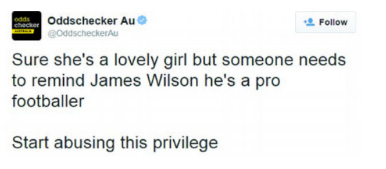
Um, pardon? That’s not polite. Or true. In fact it’s downright crass.
You can imagine how humiliated this girl was at being subjected to scrutiny re her physical suitability as a WAG – worse still, it gained global media attention.
It’s not beyond the realms of possibility that Frankie is now wracked with self doubt, scrutinising her appearance with a fine tooth comb seeing flaws that don’t exist, and even that doubts have crept into the relationship.
This kind of attack would rock any well-balanced person to the core of their self esteem, but what if a person suffers from a psychological condition known as body dysmorphic disorder (BDD)? It is a tragic consequence of BDD that it can drive people to destructive behaviours, thoughts of suicide, or to the act itself.
And no wonder that BDD is a growing concern. This story is about how you, as wellbeing or aesthetics professionals can learn to recognise the difference between someone who is just very conscious of maintaining their appearance and a woman or man who is unhealthily obsessed with it in negative, even delusional ways, and vulnerable to desperate measures to cure or camouflage their perceived problem(s). Unfortunately these measures rarely satisfy a BDD sufferer and, indeed, may make things worse.
It takes a specially qualified and experienced medico to formally diagnose and treat BDD, but aesthetics professionals who treat clients on a regular basis to enhance their appearance (and thus wellbeing) may be the first to recognise a client has a problem that is way more than skin deep.
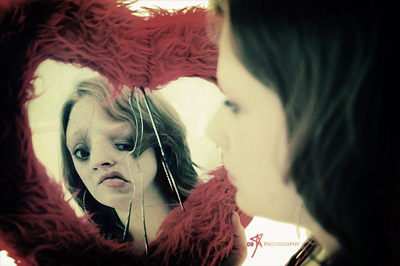
BDD is a preoccupation with an imagined defect in appearance, or excessive concern over a slight physical anomaly. It is characterised by time-consuming behaviours such as mirror-gazing, comparing one’s appearance with the appearance of others, excessive camouflaging to hide the defect, skin picking and seeking reassurance.
Studies have suggested that patients with BDD pay more attention to facial appearance in others, and have a tendency to misinterpret the neutral facial expressions of others in a negative way.
Although there are many similarities between the BDD and obsessive compulsive disorder (OCD) – which often co-exist – some differences have been identified.
Patients with BDD have significantly poorer insight than those with OCD and are more likely to be delusional and have major depressive disorder. These patients will often seek out unnecessary cosmetic surgery, which is why at this year’s Cosmetex conference in Melbourne for cosmetic surgeons and associated practitioners, being mindful of BDD was a key topic.
In his talk How People See Themselves: How Media Drive the Aesthetic Patient World, Dr David Castle, Chair of Psychiatry at St Vincent’s Health and the University of Melbourne, discussed the global, relentless pursuit of a perfect body image.
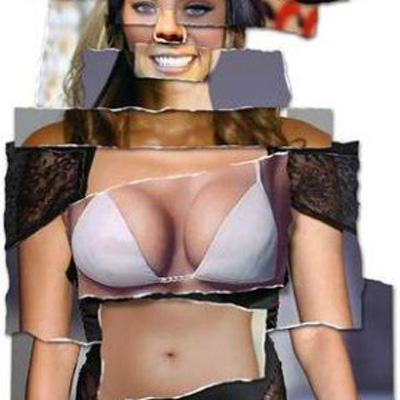
With no gender, nationality or age group seemingly immune to media’s impact on perception of self, Dr Castle highlighted not only the growing number of cases of BDD but that, more than ever, the industry needed to be equipped to deal with them.
‘How we make and manufacture beauty, how we talk about appearance is important,’ he said. ‘The images we are subjected to daily have very likely been doctored through programs like Photoshop and this is increasingly intimidating for young people who, despite being technology-savvy, are in an ‘editing haze’.
‘We thrive off a culture of celebrity worship and a yet there exists a counter-culture that picks on their very body faults. We have then, on the whole, culturally become uncomfortable with the age we have earned, the self, yet this continued connection of image and happiness persists.’
Dr Castle cited shows such as Extreme Makeover that distort our notion of inner and outer beauty, where appearance has the power to dictate personality traits and an assumed way of living. A powerful combination that could be headed right through your salon, spa or clinic door.
‘Rates of body dissatisfaction are on the rise in both men and women,’ he said. ‘We need to be careful and aware of the expectation of clients. And just as practitioners are equipped to say yes to client procedures, they also have the power to say no.’
According to Dr Katharine Phillips, a professor of psychiatry and human behaviour at the Alpert Medical School, Brown University, in Rhode Island, US, and a leading expert on the disorder, says ‘lots of studies have shown that the more you see images of perfection around you, and the more you compare yourself with those images, the worse you tend to feel about yourself.’
And yet, despite it being such a serious problem, BDD is under-reported and undertreated. ‘People with BDD are afraid they will be considered superficial or vain,’ says Dr David Mataix-Cols, a professor and consultant clinical psychologist at the Institute of Psychiatry and at the Maudsley Hospital, London, which has ramped up its treatment of BDD over the past four years.
‘It is hard to go to your GP and say, `I think my nose is too big’. So what often happens is they report an associated problem such as low mood or anxiety, but they won’t say what the reason for that is.’
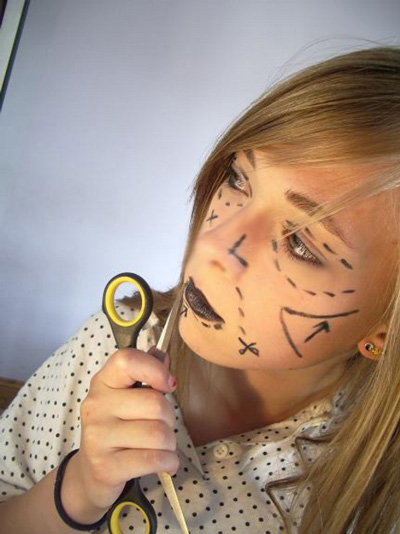
As a spa, salon or clinic therapist, talking the talk is massively important in terms of giving clients what they need -as well as learning to artfully and discreetly dissuade them from things they might want, but actually don’t need. This, while being careful not to crush their already delicate self-esteem, or feed irrational fears or delusional insecurities.
Maureen Bartlett, CEO of Sydney’s Encore Beauty, distributors in Australia of Serge Louis Alvarez cosmetics, began a series of three-hour Beautyworks styling and makeup workshops for women as an adjunct to her business, largely as a way of introducing them to SLA.
But she and her colleagues were stunned by the Pandora’s Box – a good one, it must be said – that was opened.
‘The workshops seemed to bring all the emotions that were bubbling away underneath to the surface,’ she says. ‘There were so many tears as women shared their deepest fears and insecurities, especially if they were going through big life changes, such as divorce in middle age. We have even thought we might need to engage the services of a psychologist at these sessions.
‘The focus of a therapist must be on helping clients to understand how to update or improve their ‘look’, downplay any weaknesses with correcting skills and highlight their best features. But all done in a way that boosts their self-esteem, not crush it. Language is key.
‘Many women just want to learn how to make the most of themselves and we find in a group situation they have a lot of fun and this workshop is a great confidence builder.’
According to Julie Hyne, salon image/etiquette expert, business coach and founder of Business4Beauty, if a therapist senses a client has ‘issues’ that are beyond the expertise of their business , they should consider referring the client on to someone who can help.
‘This situation calls for the salon, spa or clinic owner to have an extended network of people she or he can refer clients to,’ says Julie.
‘It’s a customer service element to be able to know when you are out of your depth and to provide a personal referral to another professional without expecting anything in return except a well and happy client.
‘If it is done in a confidential way and with the utmost integrity and sincerity, so that the client feels she or is being `heard’.
‘Acknowledging that you have listened and `heard’ and suggesting that another professional’s view would be worth investigating is a very valuable service you are providing.
‘It’s best if you have seen results of what these other professionals do, or at least have heard from others whose opinions you trust that the work said professionals do is to the standard required.’
Adds Nicole Belle RN, CEO, co-owner, specialist/internationally renowned cosmetic injector and trainer of Face Today mediclinics in Sydney and Cairns: ‘The `ageing gracefully’ mantra of previous generations now has a new meaning. It entails, if that is a person’s choice, readily accessible preventative and corrective treatments to restore and maintain the physical appearance of youthfulness.
‘Movie stars are setting expectations of an ageless society, as they have the funds, time and necessity to get and keep the look’. Their livelihoods depend on it. But it has as sociological knock-on effect.
‘People in middle age, especially, are seeking the medical edge of beauty. Handled badly, the consultation process can leave this demographic feeling flattened and depressed.
‘We have had clients come to us for another opinion because they were devastated by other clinics’ assessment. Effectively they say to us, `Am I that bad?’.
‘At Face Today we have a formulated a series of questions for a first consultation that facilitate easy discussion.
‘In a conversational manner we get to know the patient, their fears and concerns, their journey in life so far, the reason they have been motivated to walk into our clinic(s). That can be a huge step in itself.
‘Most importantly, we acknowledge clients’ amazing natural assets, their signature features and the genetic blessings they have inherited.
‘We then explain the ageing process and get them excited about the anti-ageing journey they are about to undertake.’
www.cosmetex.org; www.encorebeauty.com.au; www.facetoday.com.au; www.business4beauty.com.au




